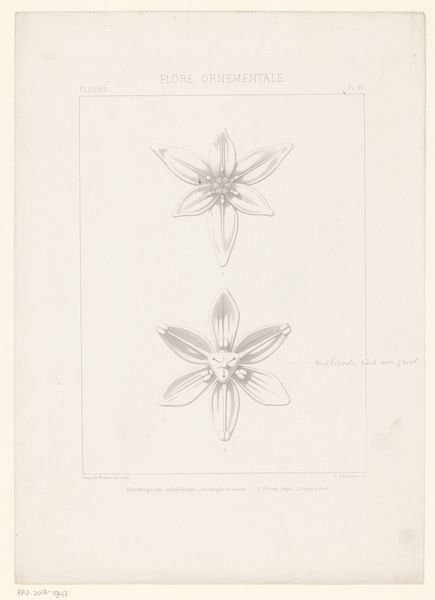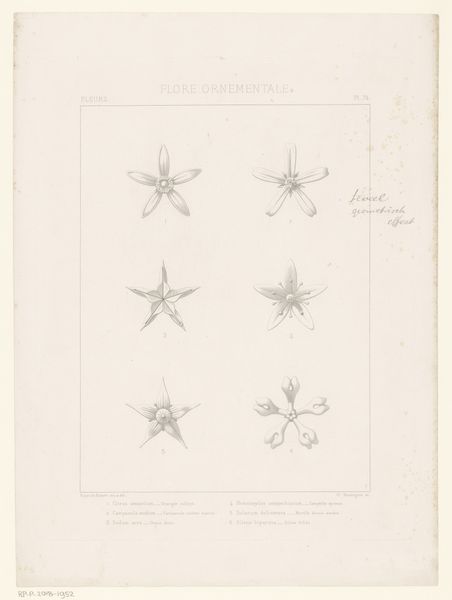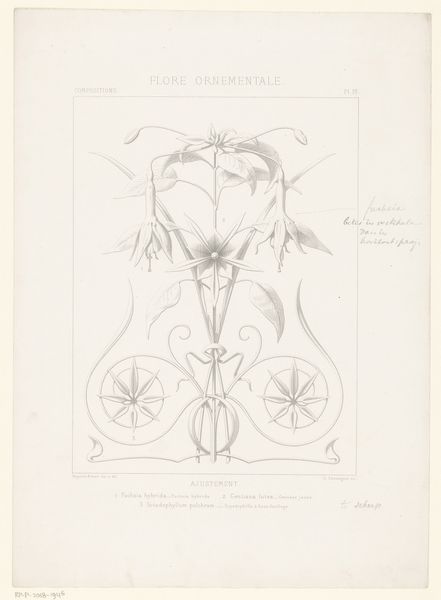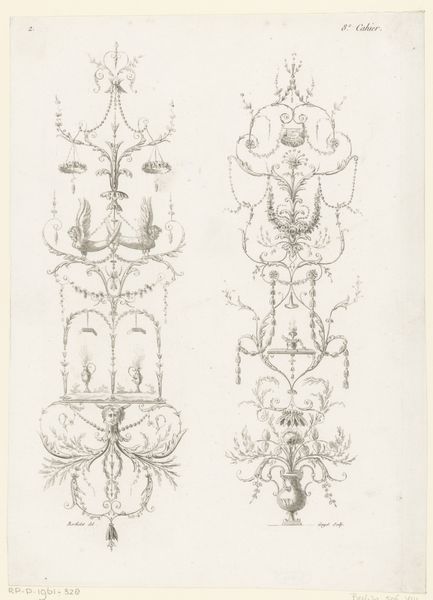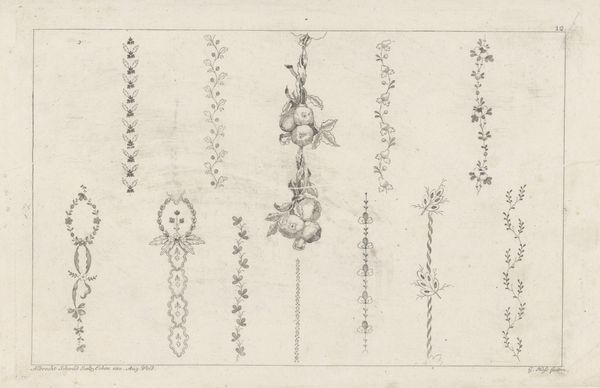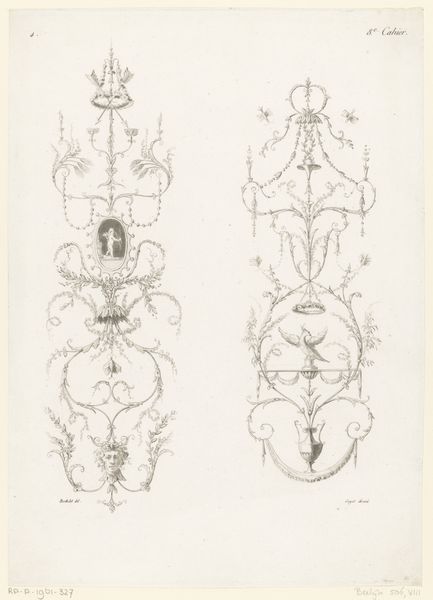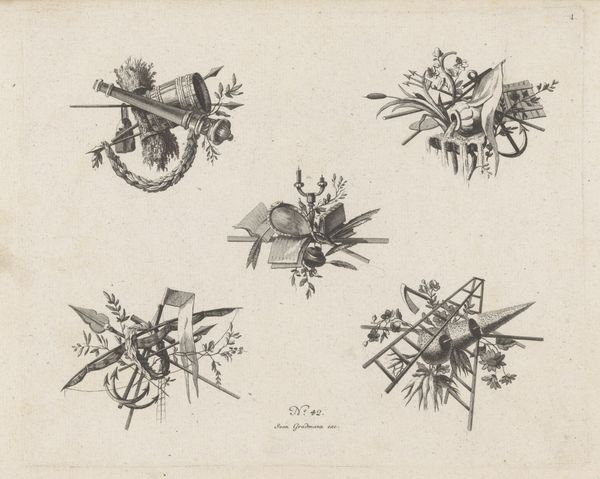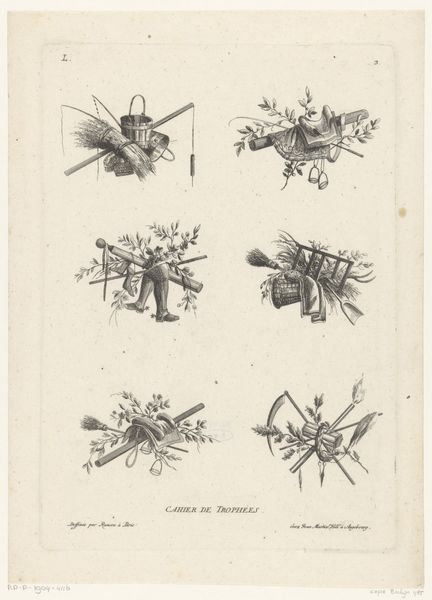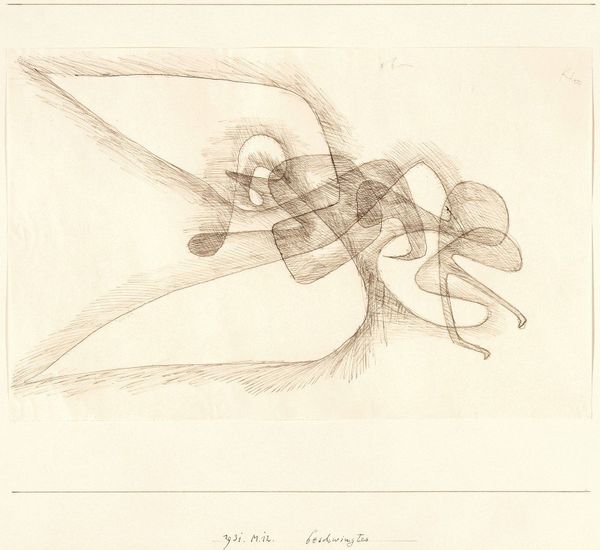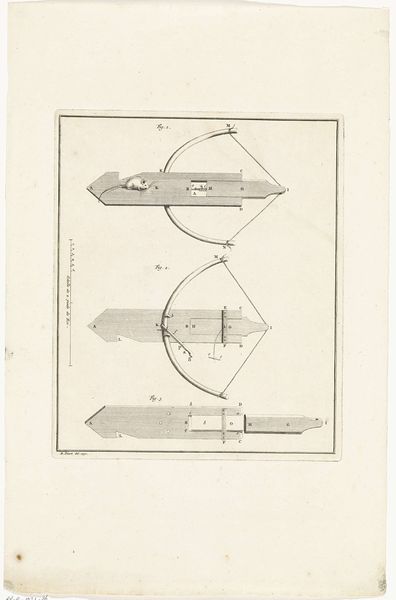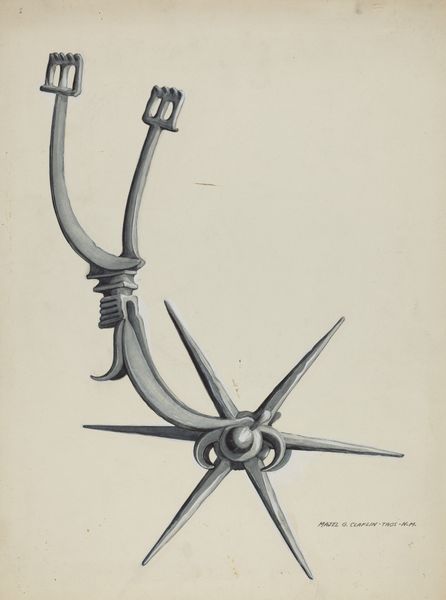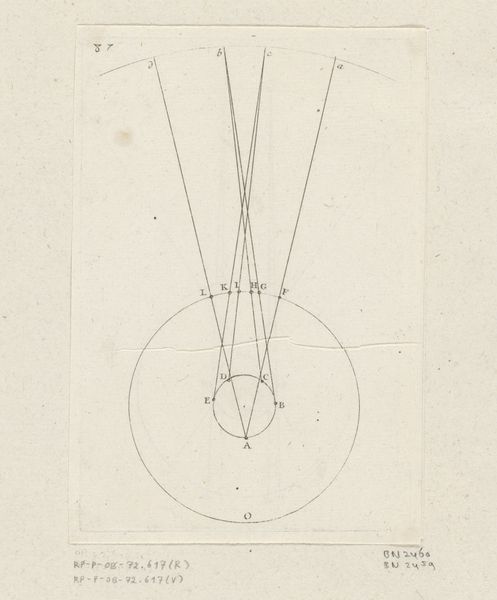
Studieblad met vooraanzichten van verschillende bloemen met vier bladeren 1842 - 1885
0:00
0:00
drawing, paper, pencil
#
drawing
#
pencil sketch
#
paper
#
pencil
#
sketchbook drawing
#
academic-art
Dimensions: height 319 mm, width 254 mm
Copyright: Rijks Museum: Open Domain
Curator: Welcome. We’re looking at "Studieblad met vooraanzichten van verschillende bloemen met vier bladeren"—that’s “Study Sheet with Front Views of Various Four-Petaled Flowers." It was created by Claude Sauvageot sometime between 1842 and 1885 using pencil on paper. Editor: Immediately, the muted tones and regimented arrangement evoke a sense of taxonomic study, almost like a botanist meticulously cataloging floral specimens. Curator: Exactly. The artist was capturing these forms with scientific precision. Consider that academic art from this period sought to categorize and represent the natural world. There was a prevalent belief in the power of objective observation and documentation, mirroring the rise of scientific disciplines. Editor: True, yet I wonder about this aesthetic of cataloging. In what ways did these forms serve societal power structures or narratives about the natural world at the time? Were they strictly botanical studies, or also reflections on design, ornamentation, or even colonial botanical endeavors? Curator: That’s an excellent point. We should examine how Sauvageot’s drawing fits within larger frameworks of classification and knowledge production. It’s essential to view this seemingly straightforward botanical study as deeply embedded within broader cultural narratives of control, particularly, as you say, related to the politics of ornamentation and botanical discovery at that moment in time. Editor: These meticulously rendered forms do carry more meaning. The flowers aren't simply objects of beauty; they become specimens, potentially symbolizing power over the natural world. Each petal stroke carries echoes of a precise eye influenced by contemporary theory. Curator: Considering all the factors, what began as an objective seeming observation can actually point to a complicated dance of observation, cultural values, and perhaps control. It invites a consideration for how museums shape perceptions of natural beauty. Editor: It’s really important to consider those historical frameworks in observing the seemingly innocent and academic lines across the paper.
Comments
No comments
Be the first to comment and join the conversation on the ultimate creative platform.
